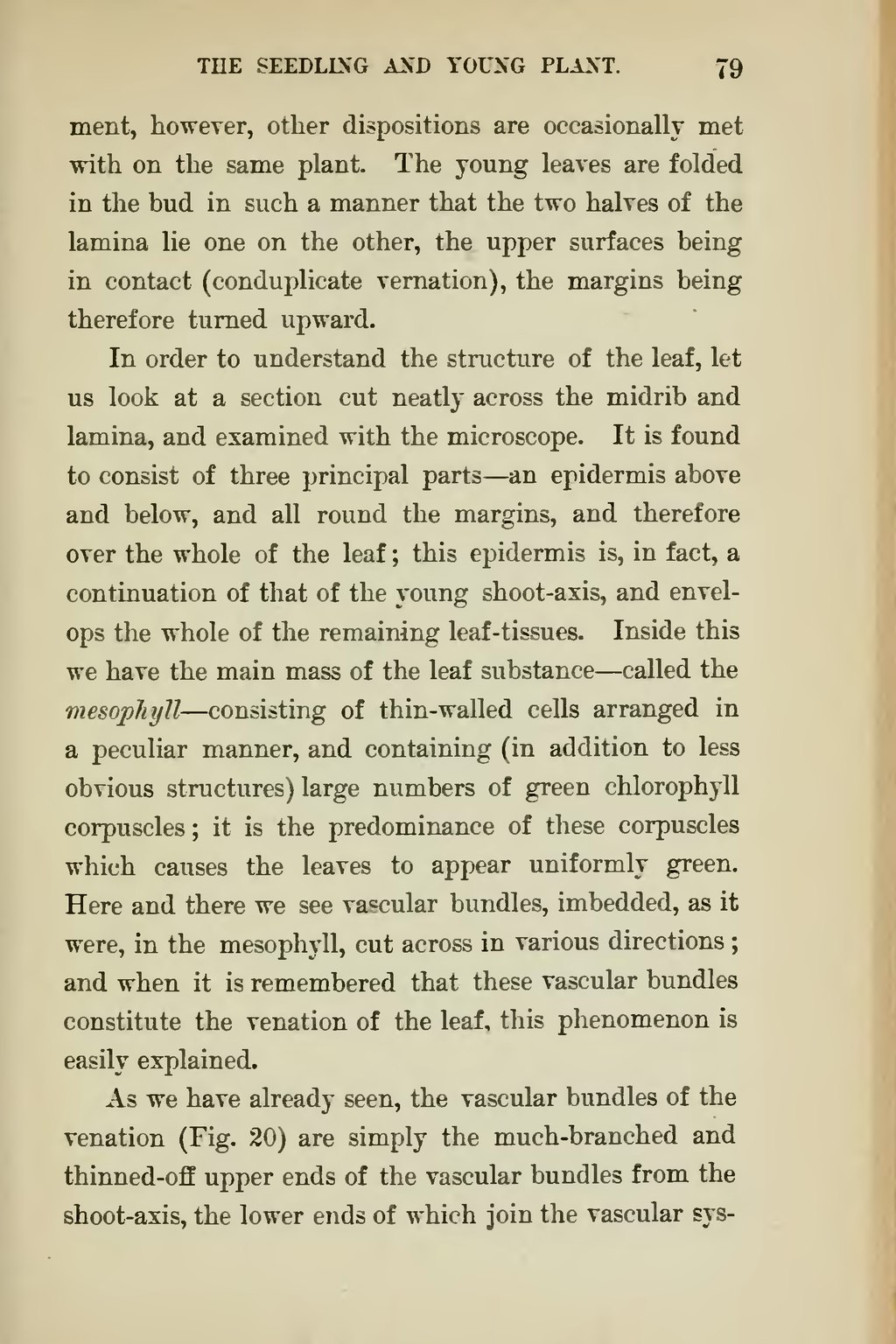ment, however, other dispositions are occasionally met with on the same plant. The young leaves are folded in the bud in such a manner that the two halves of the lamina lie one on the other, the upper surfaces being in contact (conduplicate vernation), the margins being therefore turned upward.
In order to understand the structure of the leaf, let us look at a section cut neatly across the midrib and lamina, and examined with the microscope. It is found to consist of three principal parts—an epidermis above and below, and all round the margins, and therefore over the whole of the leaf; this epidermis is, in fact, a continuation of that of the young shoot-axis, and envelops the whole of the remaining leaf-tissues. Inside this we have the main mass of the leaf substance—called the mesophyll—consisting of thin-walled cells arranged in a peculiar manner, and containing (in addition to less obvious structures) large numbers of green chlorophyll corpuscles; it is the predominance of these corpuscles which causes the leaves to appear uniformly green. Here and there we see vascular bundles, imbedded, as it were, in the mesophyll, cut across in various directions; and when it is remembered that these vascular bundles constitute the venation of the leaf, this phenomenon is easily explained.
As we have already seen, the vascular bundles of the venation (Fig. 20) are simply the much-branched and thinned-off upper ends of the vascular bundles from the shoot-axis, the lower ends of which join the vascular sys-
